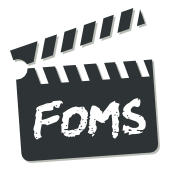Next-generation container formats
The discussion focused around Ogg and how it could be extended to accommodate certain needs.
Other encapsulation formats that were mentioned were NUT, Matroska and Quicktime.
Shane gave a presentation on some of the needs for editing and networked serving of bits of video data.
Monty gave a presentation on the planned improvements to Ogg. This requires documentation, discussion and actual implementation.
Planned improvements:
- Deal with large pages
- Eliminate partial (continued) packets
- Conditional checksumming
Another aim is to extract the bit packer out of libogg to avoid the perception that Xiph codecs can only be used within Ogg.
A in-depth discussion of Ogg created further ideas for improvement to Ogg and Skeleton:
- Skeleton could possibly be used to store an index that maps time to byte offsets
- Dynamically extracting and serving just sections of video files, we may create holes in the continuous ogg stream, which is not currently allowed by the spec, but probably won't break applications. There may need to be an extension to the encapsulation format - either in Ogg or Skeleton - to mark the holes.
- Seeking across different bits of an Ogg chain is currently difficult - we could extend skeleton and the content-length header to gain duration information and let liboggz use this to get seeking right.
Logo Design by Pascal Klein






